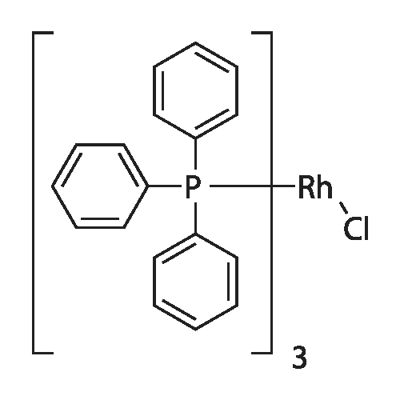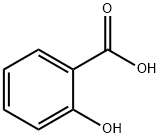
Product Details;
CasNo: 79-14-1
Molecular Formula: C2H4O3
Appearance: Light yellow to amber liquid
|
79-14-1 Name |
|
|
Name |
Glycolic acid |
|
Synonym |
Acetic acid, 2-hydroxy-;AKOS BBS-00004277;2-HYDROXYACETIC ACID;GLYCOLIC ACID, HIGH PURITY, 70 WT.% SOLU TION IN WATER;GLYCOLIC ACID REAGENTPLUS(TM) 99%;GLYCOLIC ACID SOLUTION, ~55% IN WATER;GLYCOLIC ACID, TECH., 70 WT. % SOLUTION IN WATER;GLYCOLIC ACID SIGMAULTRA |
|
79-14-1 Biological Activity |
|
|
Description |
Glycolic Acid is an inhibitor of tyrosinase, suppressing melanin formation and lead to a lightening of skin colour. |
|
Related Catalog |
Signaling Pathways >> Metabolic Enzyme/Protease >> Tyrosinase Natural Products >> Others Research Areas >> Metabolic Disease |
|
Target |
Human Endogenous Metabolite |
|
In Vitro |
Different concentrations of Glycolic Acid (GA) or LA (300 and 500 mg/mL) are tested on the growth of mouse and human melanoma cells. Both types of cells grow well, even in the presence of 300 mg/mL of each chemical for 5 days. However, 500 mg/mL Glycolic Acid inhibits the cell growth of mouse melanoma cells (41%) and humanmelanoma cells (27%), and 500 mg/mL of LA inhibits the growth of mouse melanoma cells (36%)[1]. |
|
Cell Assay |
HM3KO pigmented human melanoma cells and B16 mouse melanoma cells are cultured in Dulbecco’s modified Eagles medium supplemented with 10%fetal calf serum and appropriate amounts of antibiotics and fungizone were dissolved at a concentration of 100mg/mL in distilled water. These chemicals (e.g., Glycolic Acid ) are added to the cell cultures at final concentrations of 300 or 500 mg/mL every 2 days for 5 days[1]. |
|
References |
[1]. Usuki A, et al. The inhibitory effect of glycolic acid and lactic acid on melanin synthesis in melanoma cells. Exp Dermatol. 2003;12 Suppl 2:43-50. |
|
79-14-1 Chemical & Physical Properties |
|
|
Melting point |
75-80 °C(lit.) |
|
Boiling point |
265.6±13.0 °C at 760 mmHg |
|
Density |
1.4±0.1 g/cm3 |
|
Molecular Formula |
C2H4O3 |
|
Molecular Weight |
76.051 |
|
Flash Point |
128.7±16.3 °C |
|
PSA |
57.53000 |
|
LogP |
-1.05 |
|
Exact Mass |
76.016045 |
|
Vapour Pressure |
0.0±1.2 mmHg at 25°C |
|
Index of Refraction |
1.450 |
|
Storage condition |
2-8°C |
|
Stability |
Stable. Incompatible with bases, oxidizing agents and reducing agents. |
|
Water Solubility |
SOLUBLE |
|
79-14-1 Description |
|
Glycolic acid is the smallest alpha-hydroxy acid (AHA). It is mainly supplemented to various skin-care products to improve the skin’s appearance and texture. It can also reduce wrinkles, acne scarring, and hyperpigmentation. In textile industry, it can be used as a dyeing and tanning agent. It can also be used as a flavoring agent in food processing, and as a skin care agent in the pharmaceutical industry. It can also be added into emulsion polymers, solvents and ink additives to improve flow properties and impart gloss. Moreover, it is a useful intermediate for organic synthesis including oxidative-reduction, esterification and long chain polymerization. |
|
79-14-1 Uses |
|
In the processing of textiles, leather, and metals; in pH control, and wherever a cheap organic acid is needed, e.g. in the manufacture of adhesives, in copper brightening, decontamination cleaning, dyeing, electroplating, in pickling, cleaning and chemical milling of metals. |
Relevant Products
-
4-Hydroxyphenethyl alcoholCAS NO.: 501-94-0
CAS:501-94-0
-
Chlorotris(triphenylphosphine)rhodium(I)
CAS:14694-95-2
-
Salicylic acid
CAS:69-72-7








